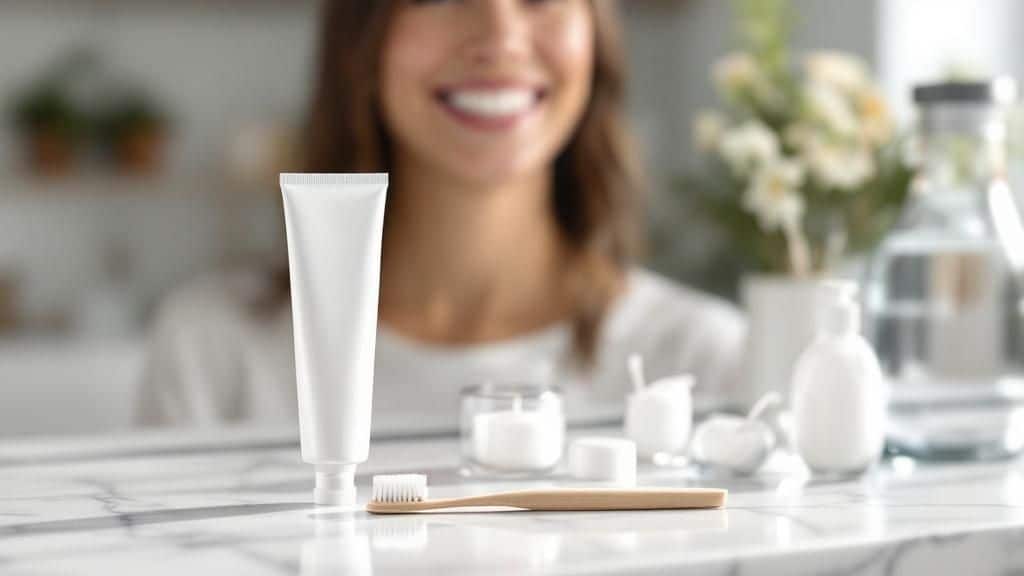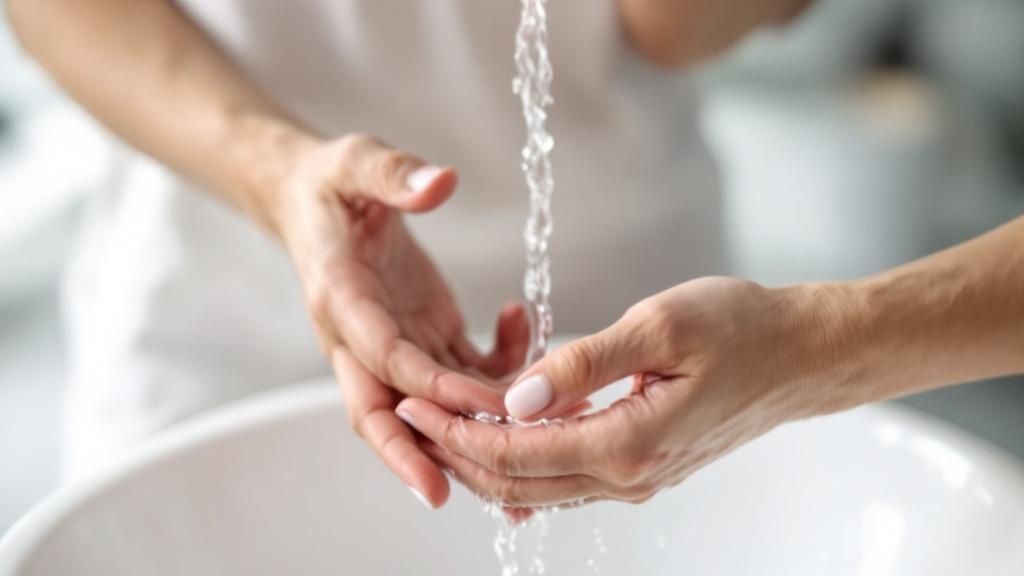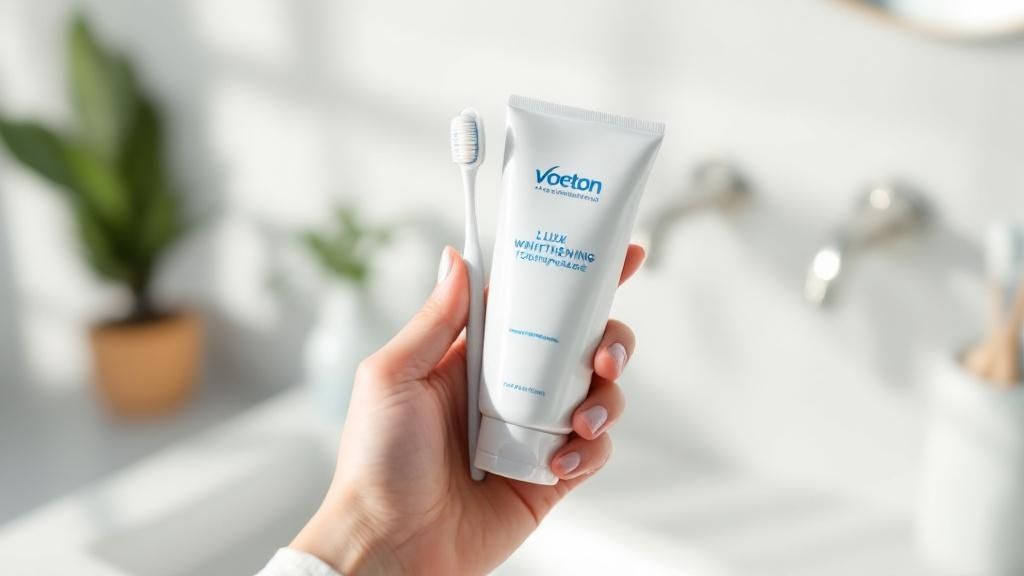Teeth Whitening After Care |
Understanding Why Aftercare Makes or Breaks Your Results
Your initial teeth whitening treatment at Smileology Dental Practice is just the first step. The aftercare you follow is vital for long-lasting results. Think of it like painting a wall: without a sealant, it’s easily damaged. Similarly, your teeth are more susceptible to stains after whitening. This is because the process temporarily opens pores in your enamel. The first 48 hours are particularly important.
The Science Behind Post-Whitening Vulnerability
Whitening temporarily makes your teeth porous, allowing the whitening agent to work. However, this also makes them prone to re-staining. Consuming pigmented foods or drinks like red wine or curry shortly after treatment can reverse the whitening effect. A “white diet” is essential for maintaining your brighter smile.
Why Aftercare Can Extend Results
Proper aftercare isn’t just about avoiding stains. It also protects and strengthens your enamel. This can significantly extend your results, sometimes by as much as 300%. Good aftercare also minimizes sensitivity, a common side effect of whitening. This means you can enjoy your new smile without discomfort. The UK teeth whitening market is growing rapidly, projected to reach US$ 387.3 million by 2030. This demonstrates the increasing demand for these services and highlights the importance of aftercare. Learn more about the market’s growth here.
The Consequences of Skipping Aftercare
Ignoring aftercare can lead to several issues. Your teeth may quickly re-stain, diminishing the impact of your investment. Increased sensitivity can make eating and drinking uncomfortable. In some cases, neglecting aftercare may even damage your enamel long term. Following the guidelines provided by your dental professional at Smileology is crucial for a lasting, radiant smile.
Mastering The Critical First 48 Hours
These initial 48 hours are absolutely crucial for your newly whitened teeth. Think of your enamel like a sponge: after whitening, it’s temporarily more porous. This means it can easily absorb stains if you’re not careful. Similar to wound care, ensuring proper aftercare is essential, as highlighted in resources like post-discharge wound care. We’ll guide you through these crucial hours, sharing strategies used by dental professionals for optimal results.
The White Diet: Fact vs. Fiction
You’ve likely heard about the “white diet,” but what does it really entail? It’s not just about aesthetics; it’s about protecting your investment. For the first two days, avoid deeply colored foods and drinks. This includes obvious culprits like red wine, tea, and coffee, but also seemingly innocent choices like berries and curries.
Navigating Mealtimes
Sticking to a white diet doesn’t mean bland meals. Plenty of delicious and nutritious options are available. Think chicken breast, white fish, plain pasta, rice, and peeled potatoes.
For example, a simple grilled chicken salad with a light vinaigrette dressing is a perfect post-whitening meal. Additionally, you can enjoy yogurt, scrambled eggs, and bananas for breakfast or snacks.
Sensitivity Management
Some sensitivity after whitening is normal. However, there are ways to manage it effectively. Using a desensitizing toothpaste specifically designed for post-whitening care can make a significant difference. Avoiding extremely hot or cold foods and drinks will also help.
If sensitivity persists or becomes severe, contact your dentist.
Spotting Warning Signs
While some sensitivity is expected, certain signs warrant professional attention. If you experience any intense or prolonged pain, unusual swelling, or significant changes in tooth color, contact your dentist immediately. Early intervention can prevent complications and ensure the best long-term outcome for your whitened teeth.
These first two days lay the foundation for your long-term whitening success. By following these tips, you can ensure your bright, new smile lasts.
Building Your Long-Term Maintenance Routine
Maintaining your bright white smile after a professional teeth whitening treatment at Smileology doesn’t require a complete lifestyle overhaul. It’s more about integrating smart, sustainable habits into your routine. With a few simple adjustments to your daily, weekly, and monthly practices, you can preserve your brilliantly white teeth without sacrificing the things you enjoy.
Daily Habits for a Dazzling Smile
Your daily routine is essential for maintaining your newly whitened smile. Choosing the right toothpaste is paramount. Look for a low-abrasion, whitening toothpaste that strengthens enamel without damaging the whitened surface. Some popular whitening toothpastes can be too abrasive, which can actually counteract your whitening results.
For example, toothpastes with charcoal or harsh abrasives can wear down enamel and potentially cause discoloration. Instead, opt for a toothpaste specifically designed for after-whitening care, or one recommended by your dentist at Smileology. Also, pay attention to your diet. While you don’t have to follow a strict “white diet” indefinitely, limiting consumption of deeply pigmented foods and drinks can help preserve your results.
Weekly Rituals to Enhance Your Whitening
Weekly maintenance is another important aspect of keeping your smile bright. This involves incorporating habits like rinsing with a fluoride mouthwash once or twice a week to strengthen enamel and help maintain whiteness. This is particularly beneficial after whitening, as fluoride helps remineralize teeth. You could easily integrate this into your routine after brushing your teeth before bed a couple of nights a week.
Monthly Maintenance for Long-Term Brilliance
Even with consistent daily and weekly care, monthly practices are crucial for long-term results. Scheduling a professional cleaning with your Smileology dentist every six months is vital for maintaining your whitened smile. These cleanings remove surface stains and keep your teeth healthy and strong, ensuring your results last.
Consider using a whitening touch-up kit provided by your dentist about once a month. These kits are specifically designed for maintenance and can help boost your whiteness between professional treatments. However, avoid overusing at-home whitening products, as excessive use can lead to tooth sensitivity and enamel damage. By making these maintenance strategies a regular part of your routine, you can protect your investment and enjoy a dazzling smile for years to come.
Navigating At-Home Products Without The Guesswork
After your professional whitening treatment at Smileology, maintaining that bright smile involves more than just good habits. Choosing the right at-home products plays a vital role in preserving and enhancing your results. The sheer variety of options available can be overwhelming. This section will guide you in selecting products that will support your teeth whitening aftercare, helping you avoid those that could diminish your brilliant new smile.
Understanding Product Labels
One of the first steps in choosing effective at-home products is understanding ingredient labels. Look for low-abrasion whitening toothpastes that gently polish without harming your enamel. Avoid toothpastes containing charcoal or harsh abrasives. These can damage enamel and cause discoloration over time.
Opt for a toothpaste specifically designed for after-whitening care. This information should be clearly indicated on the product label. The UK has seen a growing trend of people turning to at-home dental solutions. This is reflected in the significant increase in sales of at-home dental care products during the pandemic. Learn more about this trend here.
Maintenance Gels and Whitening Toothpastes
Maintenance gels, often provided by your dentist, offer an effective way to boost your whitening between professional treatments. It’s important to follow the instructions carefully and avoid overuse, which can lead to tooth sensitivity.
Whitening toothpastes can also be a helpful part of your daily routine. They are generally less potent than professional treatments or maintenance gels, making them suitable for regular use. Remember to combine them with other good aftercare practices, such as limiting stain-causing foods and drinks.
Emerging Technologies and Red Flags
The dental care market is constantly evolving, with new products and technologies emerging regularly. While some innovations can be beneficial, it’s important to approach new products with caution. Be wary of products promising instant, dramatic results.
Often, these claims are exaggerated, and the products might contain harsh ingredients. Stick with products recommended by your dentist or those backed by reputable dental organizations. If a product sounds too good to be true, it probably is.
Timing and Product Combinations
Using the right products at the right time can significantly impact your teeth whitening aftercare. For example, if you are using a maintenance gel, follow your dentist’s instructions on frequency and application. Typically, these are not designed for daily use.
Understand how different products interact. Using multiple whitening products simultaneously can damage your enamel and increase sensitivity. Always consult your dentist at Smileology before combining different at-home whitening products. By following these guidelines and working with your dental professional, you can establish a safe and effective at-home routine that keeps your smile bright.
Natural Solutions That Actually Work
Beyond professional treatments and conventional products, many natural approaches can complement your teeth whitening aftercare. This section explores evidence-based natural solutions that work alongside your treatment from Smileology Dental Practice, helping you achieve a naturally brighter, healthier smile. It’s important to understand the real benefits of these methods and avoid misleading trends.
Oil Pulling, Charcoal, and Herbal Rinses: Separating Fact From Fiction
Oil pulling, an ancient practice of swishing oil in your mouth, is often praised for its whitening potential. While it can improve oral hygiene by removing bacteria, the evidence for its whitening effects is minimal. Similarly, activated charcoal has become a popular natural whitener. However, its abrasive nature can damage tooth enamel, making teeth vulnerable to staining. It’s best to avoid charcoal-based products, especially after professional whitening.
Herbal rinses offer a gentler approach. Rinses with sage or chamomile, for example, possess anti-inflammatory properties that can soothe gums after whitening. These rinses can be a refreshing addition to your routine. However, they should not replace standard aftercare practices like using a desensitizing toothpaste or following a white diet. Maintaining a balance between natural remedies and professional recommendations is key.
The Power of Diet: Foods That Naturally Support Whitening
Your diet significantly impacts the maintenance of whitened teeth. Crunchy fruits and vegetables, such as apples and carrots, act like natural abrasives, gently scrubbing away surface stains. This mirrors the polishing effect of a professional cleaning. Calcium-rich foods, like dairy products, strengthen enamel and make it more resistant to discoloration. A healthy diet contributes to both overall oral health and long-term whitening maintenance.
Safely Incorporating Baking Soda
Baking soda is a common household item sometimes used for teeth whitening. It has mild abrasive properties, but it’s essential to use it with caution. Overuse can erode enamel, increasing sensitivity and causing damage. If you use baking soda, mix a small amount with water to create a paste, and use it sparingly, no more than once a week. Consult your dentist at Smileology before adding baking soda to your aftercare routine.
To help you make informed decisions about aftercare, we’ve compiled a comparison of natural and conventional products:
Natural vs Conventional After Care Products Comparison
A detailed comparison of natural and conventional aftercare products, including effectiveness, safety considerations, and cost analysis
| Product Type | Natural Options | Conventional Options | Effectiveness | Safety Rating | Cost Range |
|---|---|---|---|---|---|
| Whitening | Oil pulling, Baking soda, Fruits/Vegetables | Whitening strips, Trays, Gels | Varies, generally lower for natural options | High for natural options with proper use, moderate for conventional with potential for sensitivity | Low for natural options, moderate to high for conventional |
| Sensitivity Relief | Herbal rinses (chamomile, sage) | Desensitizing toothpaste, Potassium nitrate gels | Moderate for natural, high for conventional | High for both with proper use | Low for natural, moderate for conventional |
| Enamel Strengthening | Dairy products | Fluoride toothpaste, Remineralizing treatments | Moderate for natural, high for conventional | High for both | Low for natural, moderate to high for conventional |
This table highlights the differences in effectiveness, safety, and cost between natural and conventional aftercare options. While natural remedies can be a cost-effective supplement to your routine, conventional products often offer more targeted and potent results.
The growing demand for natural teeth whitening products in the UK reflects a larger trend toward natural oral care. The UK Teeth Whitening Powder market, fueled by natural and organic products often used in aftercare, was valued at USD 3447.36 million in 2025 and is projected to grow at a CAGR of 5.5%. Learn more here. This growing interest underscores the importance of choosing effective natural methods.
Blending Natural and Conventional Approaches
The most successful aftercare strategies often combine natural and conventional methods. Following your dentist’s recommendations at Smileology for professional products and treatments, alongside incorporating natural solutions like dietary changes and gentle herbal rinses, can optimize your whitening results. This balanced approach ensures both the safety and effectiveness of your routine, helping you maintain a healthy, bright smile.
Avoiding The Mistakes That Ruin Results
Even with the best of intentions, many people inadvertently sabotage their teeth whitening investment. This section explores common aftercare missteps and provides practical advice from Smileology Dental Practice on how to maintain a dazzling smile.
Common Aftercare Errors
Timing Errors: Consuming staining foods or drinks too soon after treatment can easily reverse the whitening effect. Immediately after whitening, teeth are more porous and absorb pigments readily. Even seemingly harmless foods can stain during this period.
Product Mishaps: Using abrasive toothpastes or combining whitening products can damage enamel and increase sensitivity, leading to discomfort and potentially reversing whitening effects. Choose products specifically designed for post-whitening care.
Lifestyle Oversights: Smoking, chewing tobacco, and frequently consuming staining foods and drinks gradually diminish whitening results. These habits introduce pigments that embed in the porous enamel. If you’re interested in natural ways to boost your energy, check out these helpful tips on natural energy boosters.
Over-Whitening and its Warning Signs
Over-whitening can lead to increased sensitivity, translucent teeth, and even enamel damage. Observe recommended touch-up treatment frequency and avoid excessive use of at-home whitening products. Warning signs of over-whitening include persistent sensitivity, a bluish tinge to the teeth, and a chalky appearance of the enamel.
The infographic above shows how sensitivity typically decreases in the days following treatment. Sensitivity is highest in the first two days, gradually lessening over the next five to seven days. This highlights the importance of gentle aftercare, especially initially.
To further clarify the aftercare process, let’s review a detailed timeline of recommendations:
After Care Timeline and Dos and Don’ts: A comprehensive timeline showing what to do and avoid during different phases of aftercare recovery
| Time Period | Recommended Actions | Foods to Avoid | Products to Use | Warning Signs |
|---|---|---|---|---|
| 24-48 Hours | Avoid all staining foods and drinks. Rinse mouth frequently with water. Use prescribed pain relief if needed. | Coffee, tea, red wine, dark sodas, berries, tomato sauce, curry | Soft-bristled toothbrush, desensitizing toothpaste | Intense sensitivity, slight discomfort |
| 3-7 Days | Gradually reintroduce foods, starting with lighter-colored options. Continue using desensitizing products. | Dark chocolate, citrus fruits, acidic foods | Desensitizing toothpaste, fluoride rinse | Mild sensitivity, possible gum irritation |
| 7-14 Days | Resume normal diet, but remain mindful of staining substances. | Limit consumption of highly pigmented foods and beverages | Whitening maintenance toothpaste (as recommended by your dentist) | Any lingering discomfort, unusual discoloration |
| Long-Term | Maintain good oral hygiene, schedule regular dental checkups, and follow dentist’s recommendations for touch-up treatments. | Be aware of staining habits | As recommended by your dentist | Increased sensitivity, changes in tooth color |
This table outlines key actions, foods to avoid, recommended products, and potential warning signs during different stages of recovery. Following these guidelines promotes optimal healing and long-lasting results.
Getting Back on Track
If you’ve made aftercare mistakes, don’t worry. Consult your dentist at Smileology. They can assess the issue and recommend solutions, such as further professional whitening, desensitizing products, or adjustments to your home care routine.
Recognizing the Need for Professional Help
Persistent sensitivity, unusual pain, swelling, or unexpected color changes warrant a call to your dentist. They can determine the cause and provide necessary care. A strong relationship with your dental team is essential for long-term whitening success. Regular check-ups and professional cleanings are crucial for maintaining a bright smile and ensuring optimal oral health.
When Professional Help Makes The Difference
After your teeth whitening treatment at Smileology, maintaining your bright new smile involves knowing when to seek professional guidance. Understanding the signs that warrant a call to your dentist can preserve your results and prevent potential issues. This section empowers you to become a proactive advocate for your dental health, ensuring your whitening investment yields a lasting, radiant smile.
Recognizing When to Seek Expert Advice
While some sensitivity is normal after teeth whitening, certain symptoms require professional attention. Persistent sensitivity, unusual pain, swelling, or any unexpected changes in tooth color should prompt a call to your dentist at Smileology. For example, if your sensitivity lingers for more than a few days or worsens, it’s essential to seek professional advice. This could point to an underlying problem needing specific treatment. Similarly, any noticeable gum swelling or discomfort should be addressed immediately.
Effective Communication With Your Dental Team
Clear communication with your dental team is crucial for successful aftercare. Don’t hesitate to voice any concerns or questions. Be precise when describing your symptoms, including their duration and any home remedies you’ve used. This information allows your dentist to accurately assess the situation and provide the best advice. For instance, explaining the nature of your sensitivity—whether it’s a sharp, stabbing pain, a dull ache, or overall discomfort—can greatly assist in diagnosis. This collaborative approach guarantees you’ll receive personalized guidance based on your unique needs.
The Role of Follow-Up Appointments and Maintenance
Follow-up appointments are vital for preserving your whitened teeth. These visits enable your dentist to monitor your progress, address any concerns, and offer ongoing support. Your dentist might suggest professional maintenance treatments at Smileology to further improve and prolong your results. These treatments can help maintain your bright smile, ensuring your teeth remain healthy and strong. Discussing realistic expectations for touch-ups during these appointments allows you to plan for long-term maintenance.
Documenting Your Aftercare Experience
Keeping a journal of your aftercare experience, including any sensitivity, product usage, and dietary habits, can be extremely helpful. This record furnishes valuable insights for your dentist, allowing them to tailor your treatment plan and address any recurring problems. It also helps you recognize patterns and make informed choices about your ongoing aftercare. This proactive strategy ensures you’re actively participating in maintaining your oral health and maximizing your whitening results.












